Zoology Lab 7: Small Ecdysozoans and Arthropods
1/31
There's no tags or description
Looks like no tags are added yet.
Name | Mastery | Learn | Test | Matching | Spaced |
|---|
No study sessions yet.
32 Terms
Superphylum Ecdysozoa
Phylum Onychophora
A: Antennae
B: Mouth
C: Oral Papillae
What Superphylum and Phylum is this organism in?
What is A, B, and C pointing to?
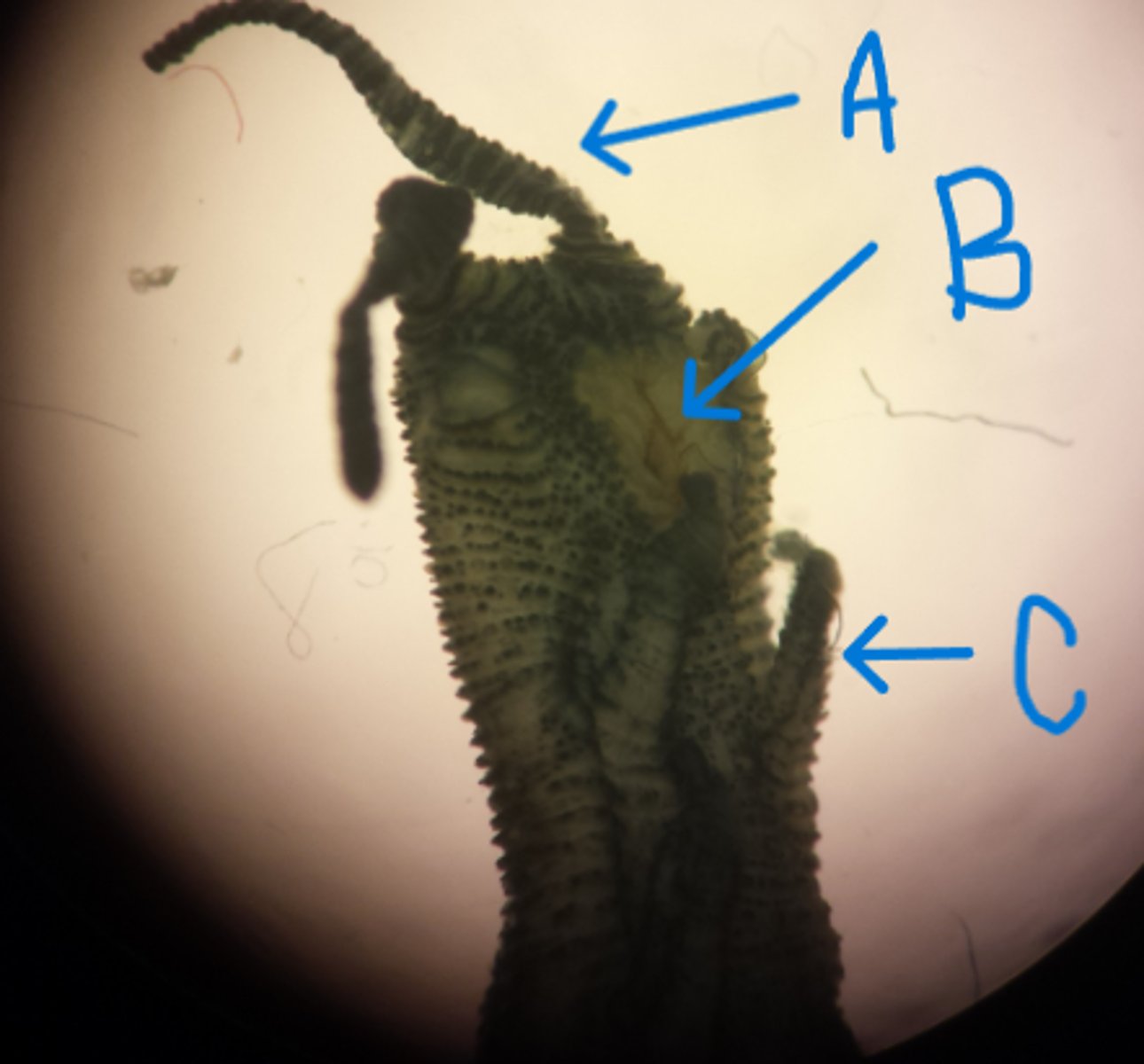
Superphylum Ecdysozoa
Phylum Tardigrada
What Superphylum and Phylum is this animal in?
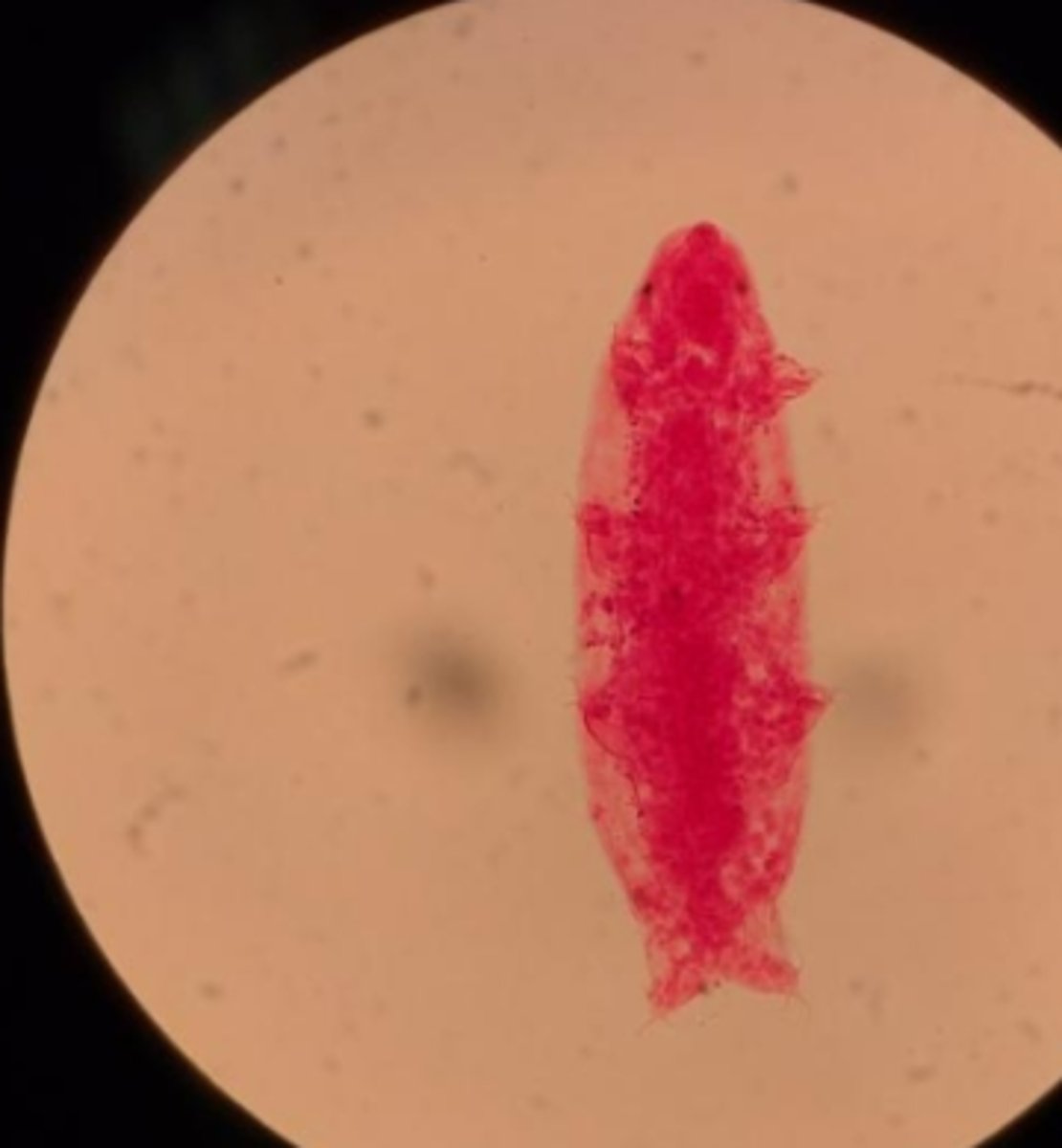
Superphylum Ecdysozoa
Phylum Arthropoda
Class Trilobita
What Superphylum, Phylum, and Class is this organism in?
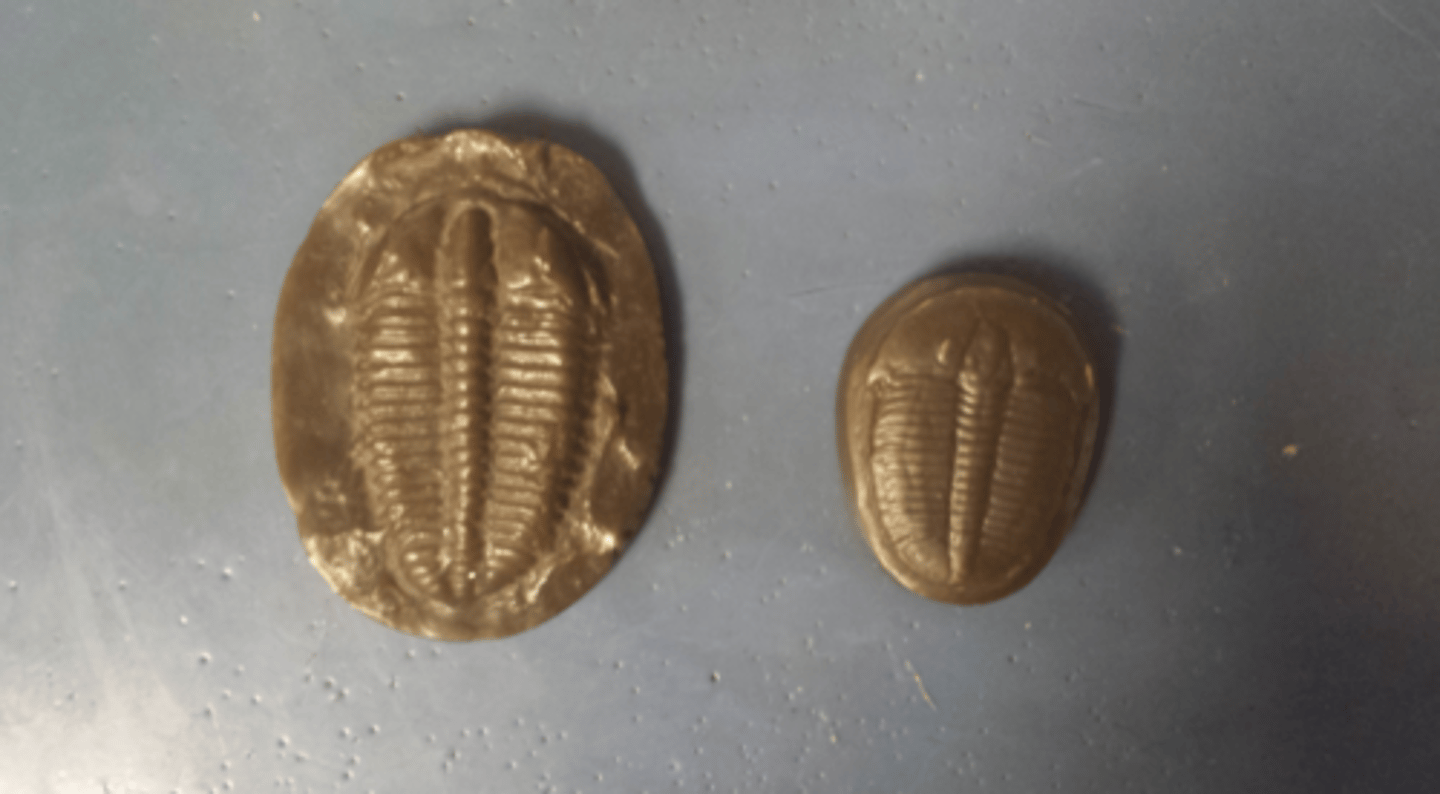
Phylum Arthropoda, Subphylum Celicerata, Class Merostomata
A: anus
B: swimmerets
C: book gills
D: Legs
E: pedipalps
F: chelicerae
Left side is male, right side is female
What Phylum, Subphylum, and Class is this animal in?
What is A, B, C, D, E, and F pointing to?
What side is male and what side is female?
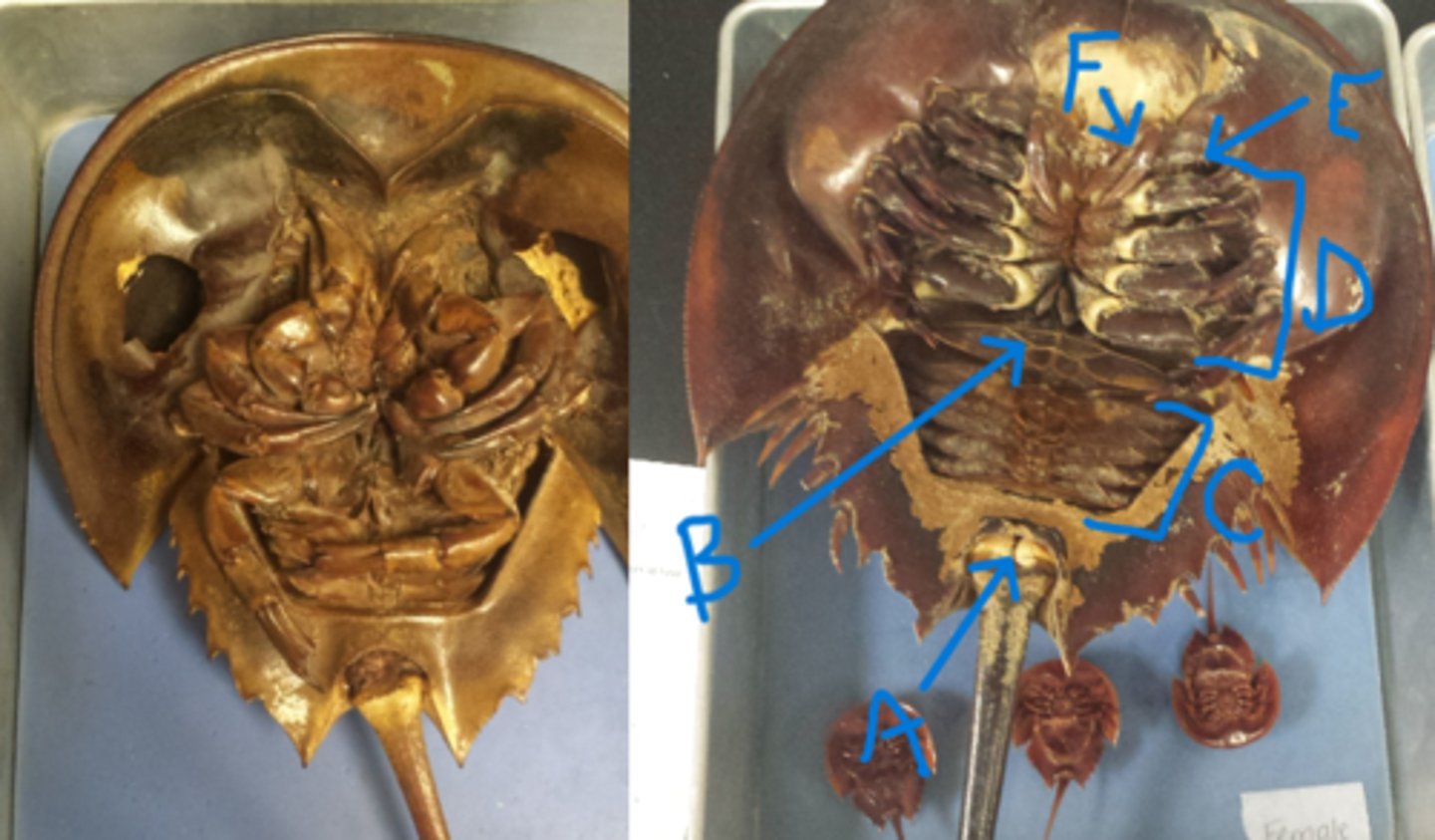
Phylum Arthropoda
Subphylum Celicerata
Class Merostomata
A: simple eyes
B: compound eyes
C: opisthosoma
D: telson
E: prosoma
What Phylum, Subphylum, and Class is this animal in?
What is A, B, C, D, and E pointing to?
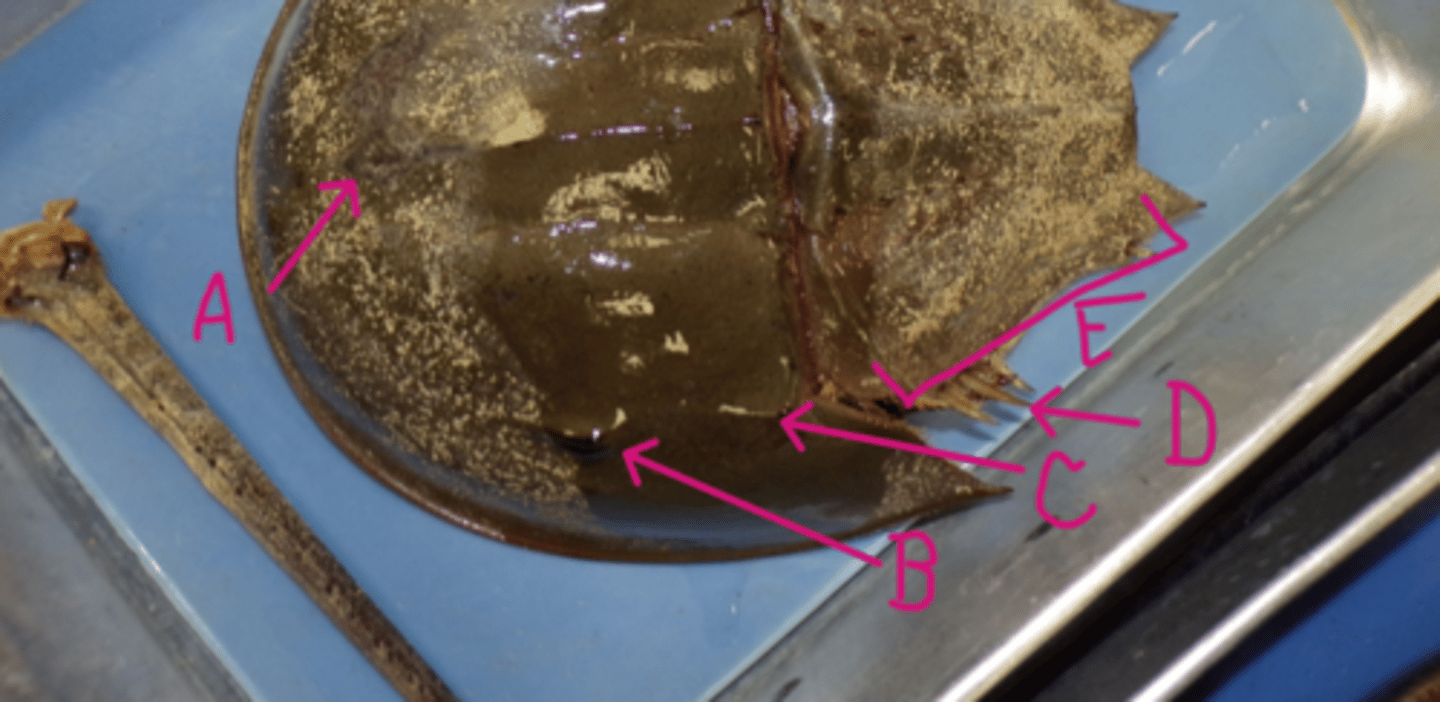
How do you tell the difference between a male and female Merostomata?
Males has modified pedipalps that look like thumbs
Phylum Arthropoda
Subphylum Chelicerata
Class Merostomata
What Phylum, Subphylum, and Class is this larva in?
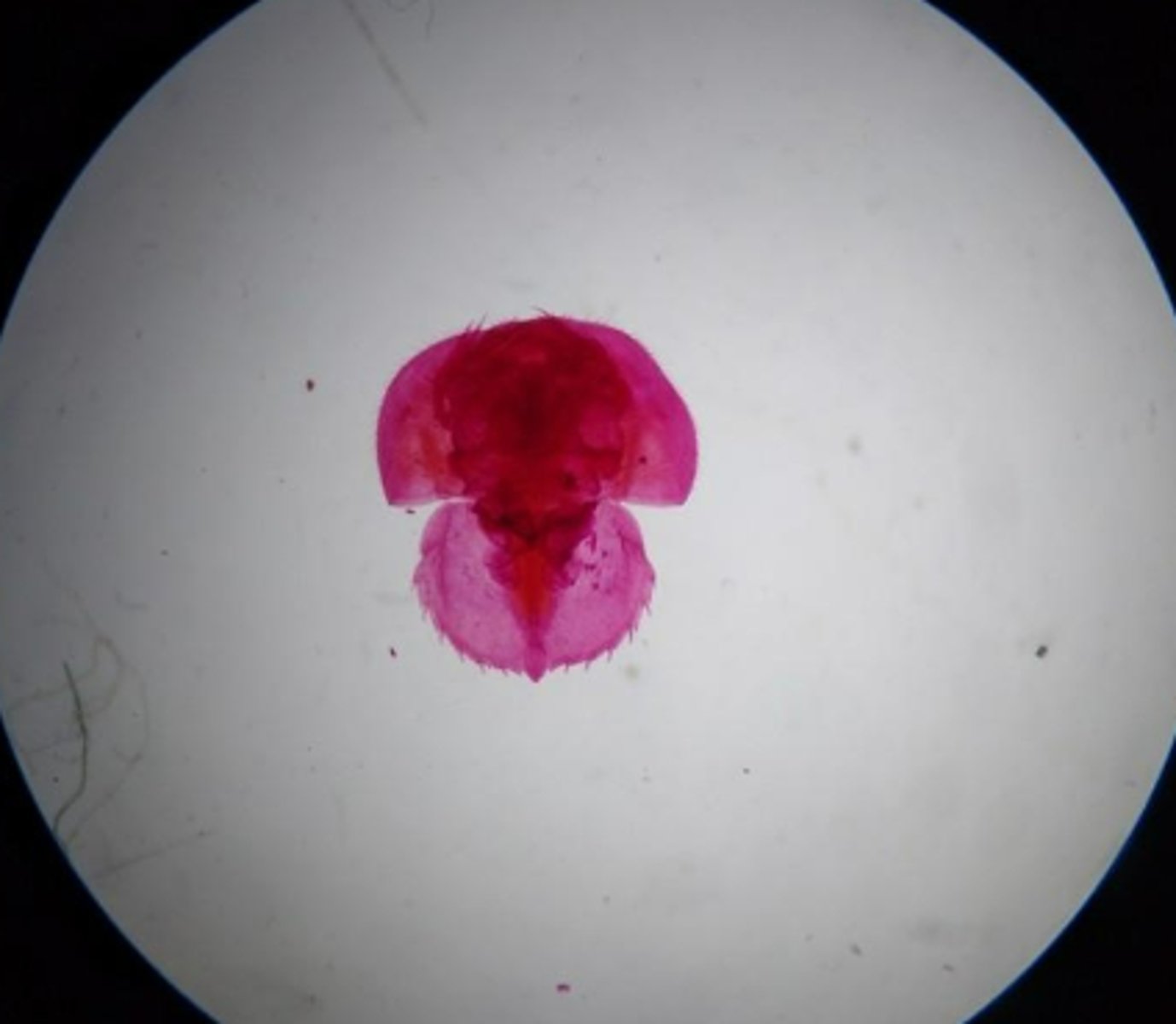
Phylum Arthropoda
Subphylum Chelicerata
Class Arachnida
A: Chelicerae
B: pedipalps
What Phylum, Subphylum, and Class is this animal in?
What is A and B pointing to?
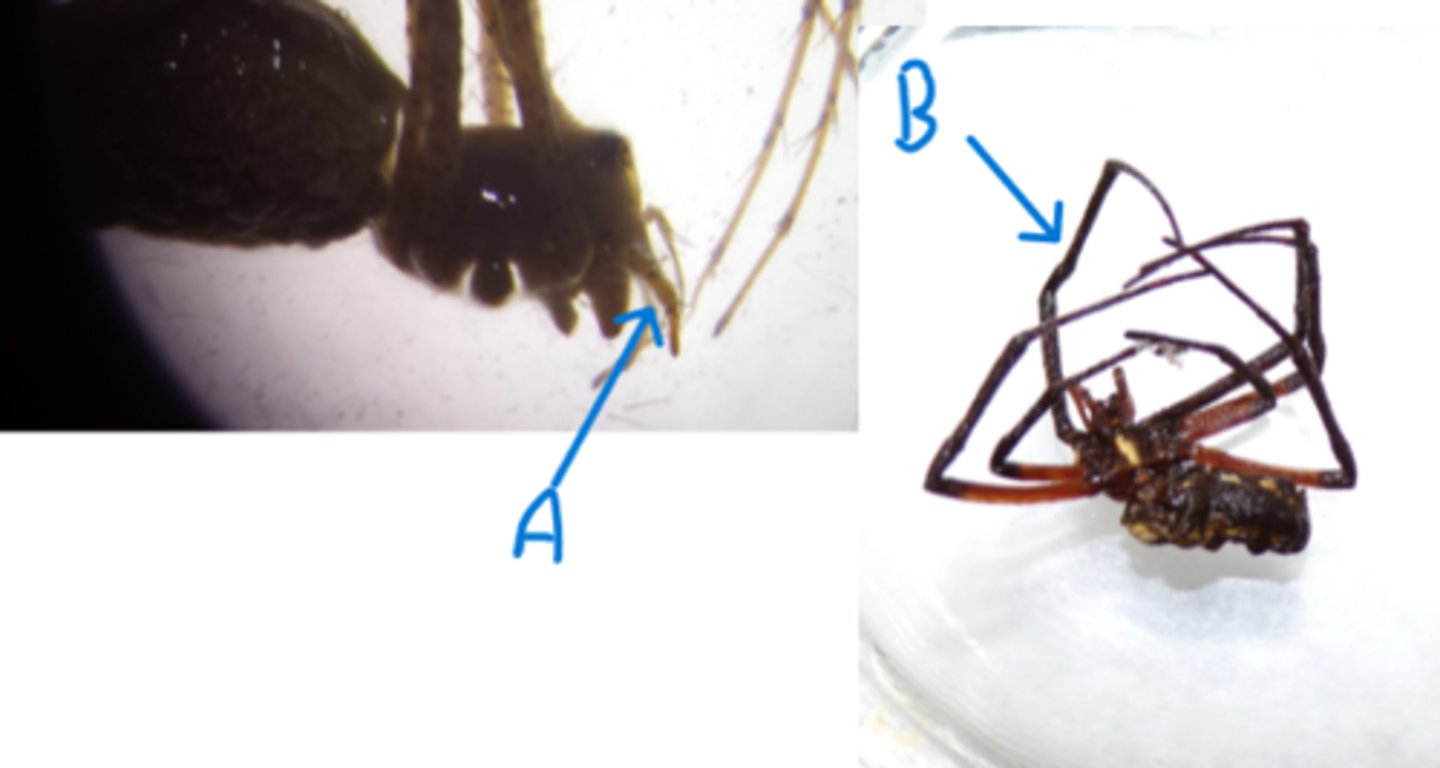
Phylum Arthropoda
Subphylum Chelicerata
Class Arachnida
Latrodectus mactans (“black widow spider”)
What Phylum, Subphylum, and Class is this animal in? What’s the scientific name?
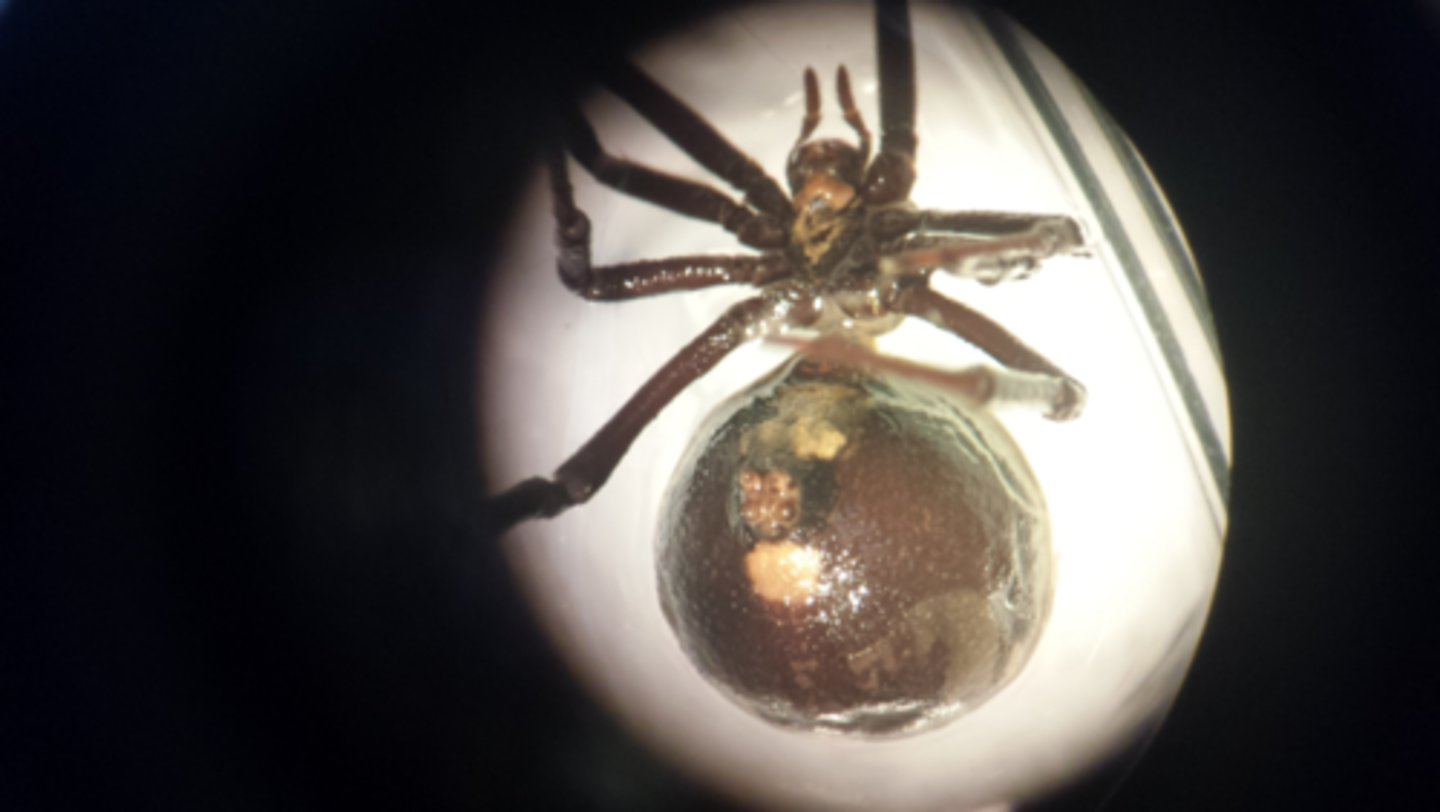
Phylum Arthropoda
Subphylum Chelicerata
Class Arachnida
A: walking legs
B: chelicerae
C: pedipalps
What Phylum, Subphylum, and Class is this animal in?
What is A, B, and C pointing to?

Phylum Arthropoda
Subphylum Chelicerata
Class Arachnida
Loxosceles reclusa (“Brown Recluse”)
What Phylum, Subphylum, and Class is this animal in? What’s the scientific name?
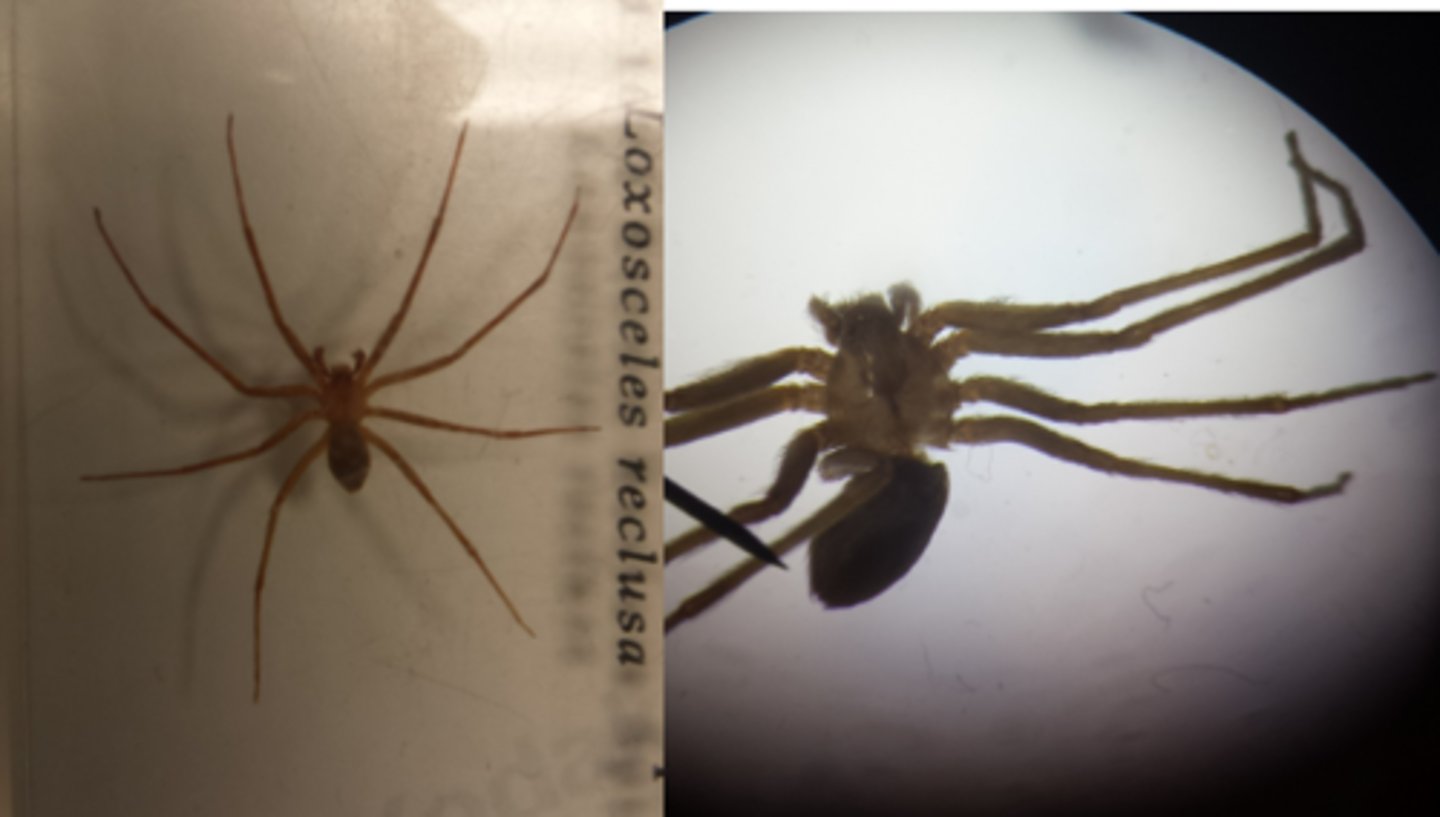
Phylum Arthropoda
Subphylum Chelicerata
Class Arachnida
A: chelicerae
B: pedipalps
What Phylum, Subphylum, and Class is this animal in?
What is A and B pointing to?
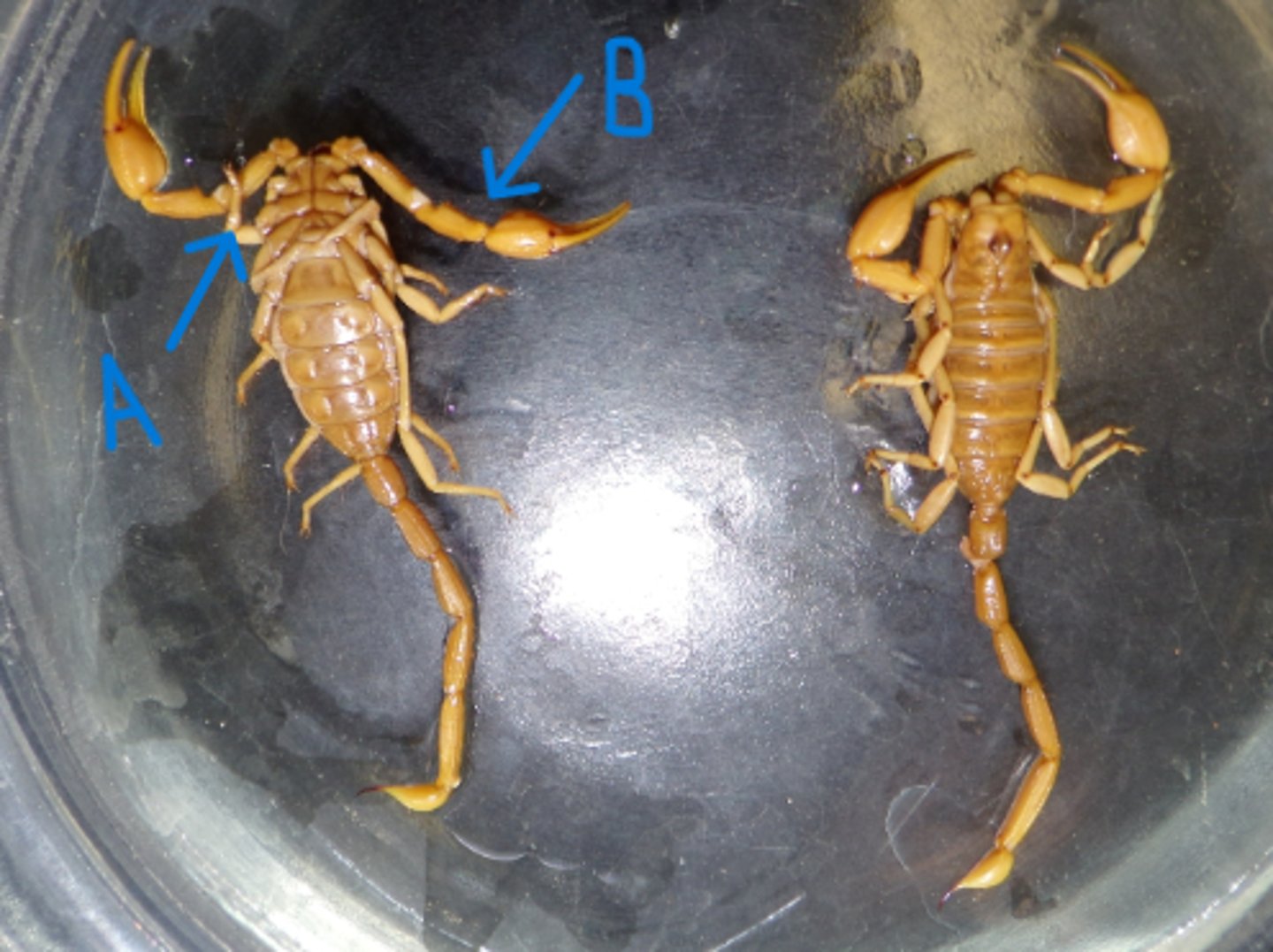
Phylum Arthropoda
Subphylum Chelicerata
Class Arachnida
What Phylum, Subphylum, and Class is this animal in?
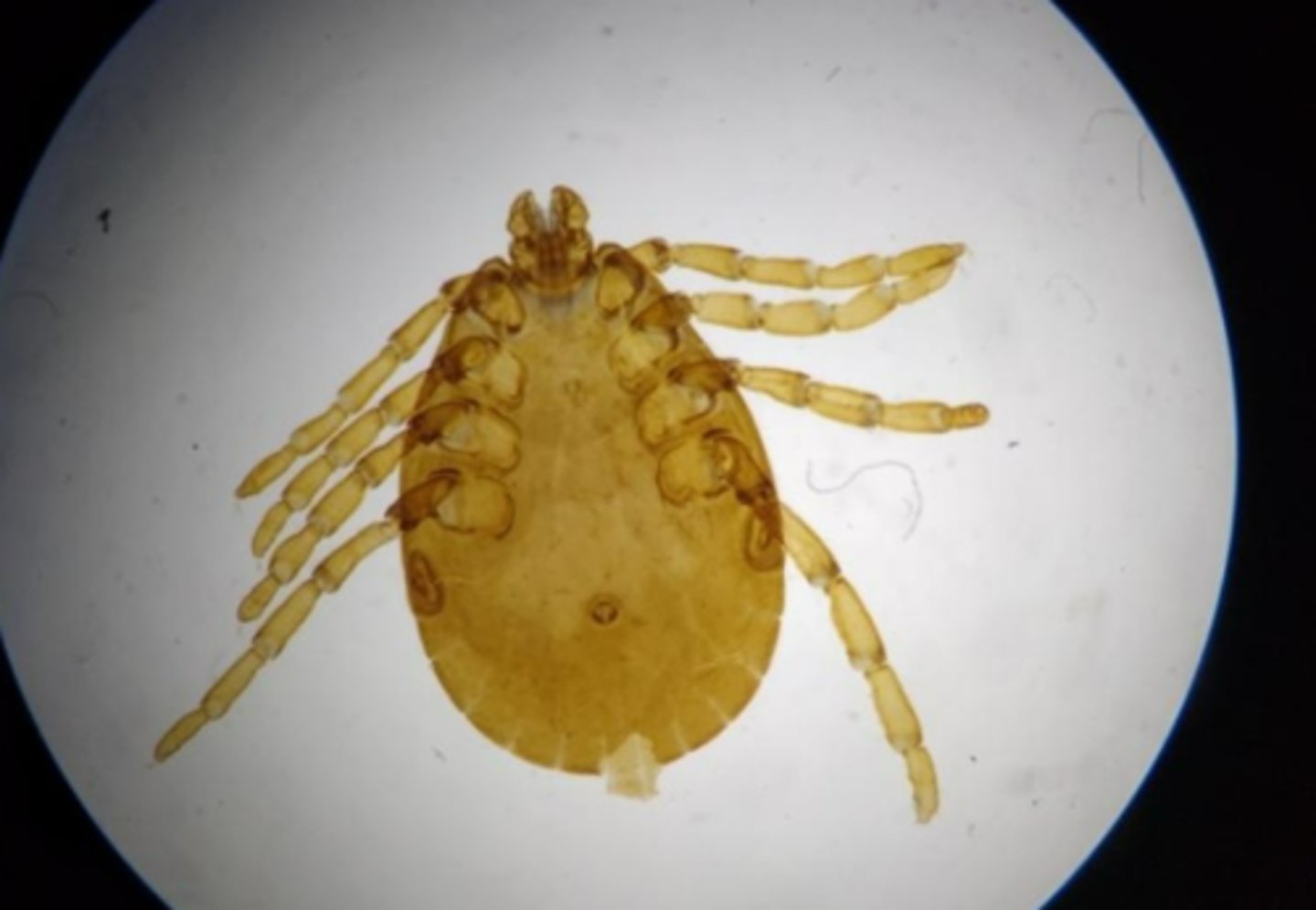
Phylum Arthropoda
Subphylum Chelicerata
Class Arachnida
Demodex
Tick
What is the Phylum, Subphylum, Class, and Genus of this animal?
What is it's common name?

Phylum Arthropoda
Subphylum Chelicerata
Class Pycnogonida
What is the Phylum, Subphylum, Class, and Genus of this animal?
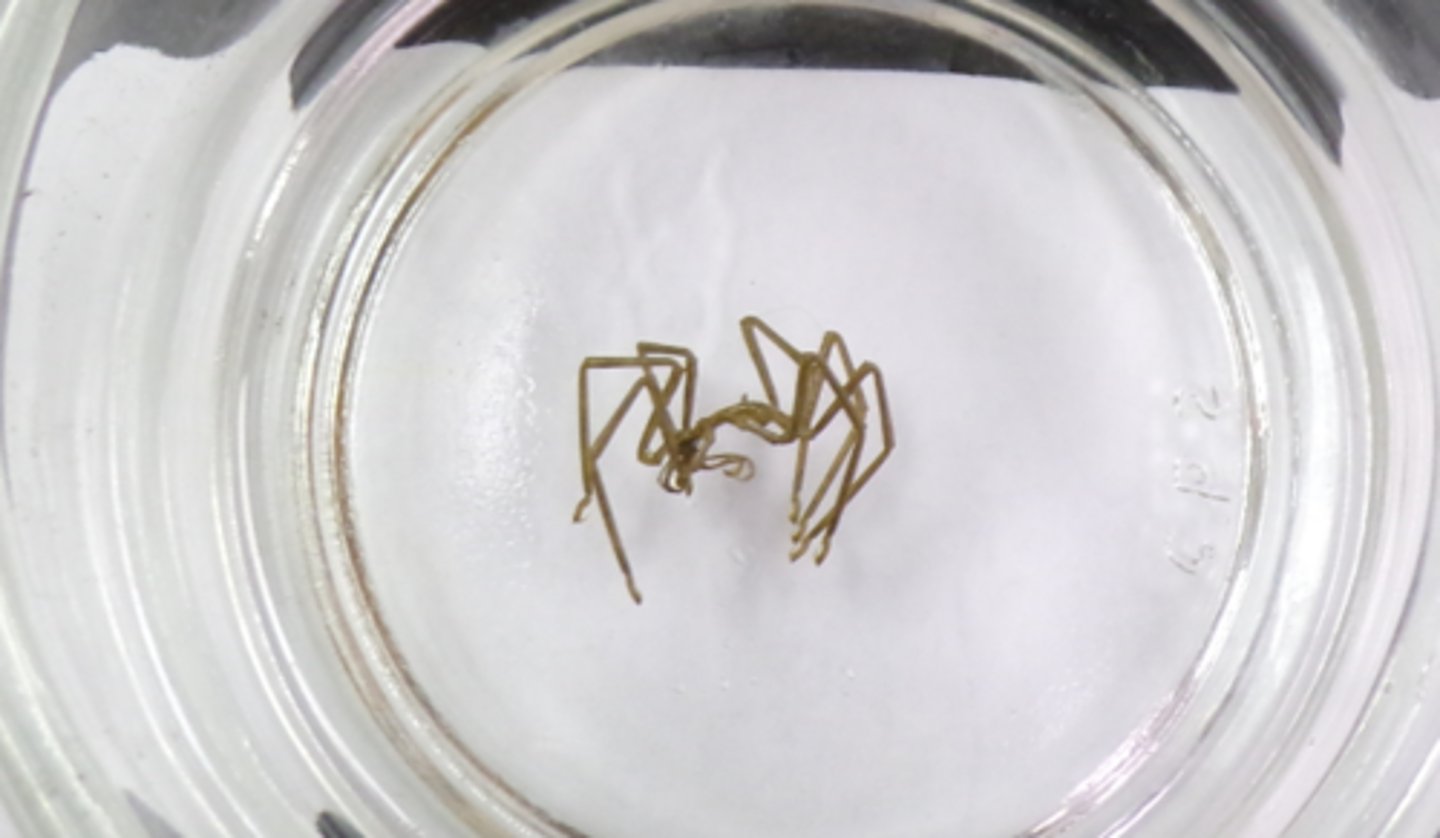
Phylum Arthropoda
Subphylum Myriapoda
Class Chilopoda
Centipede
Poison claw
1 pair
What is the Phylum, Subphylum, Class, and common name of this animal?
What is the arrow pointing to?
How many pairs of legs are there per segment?
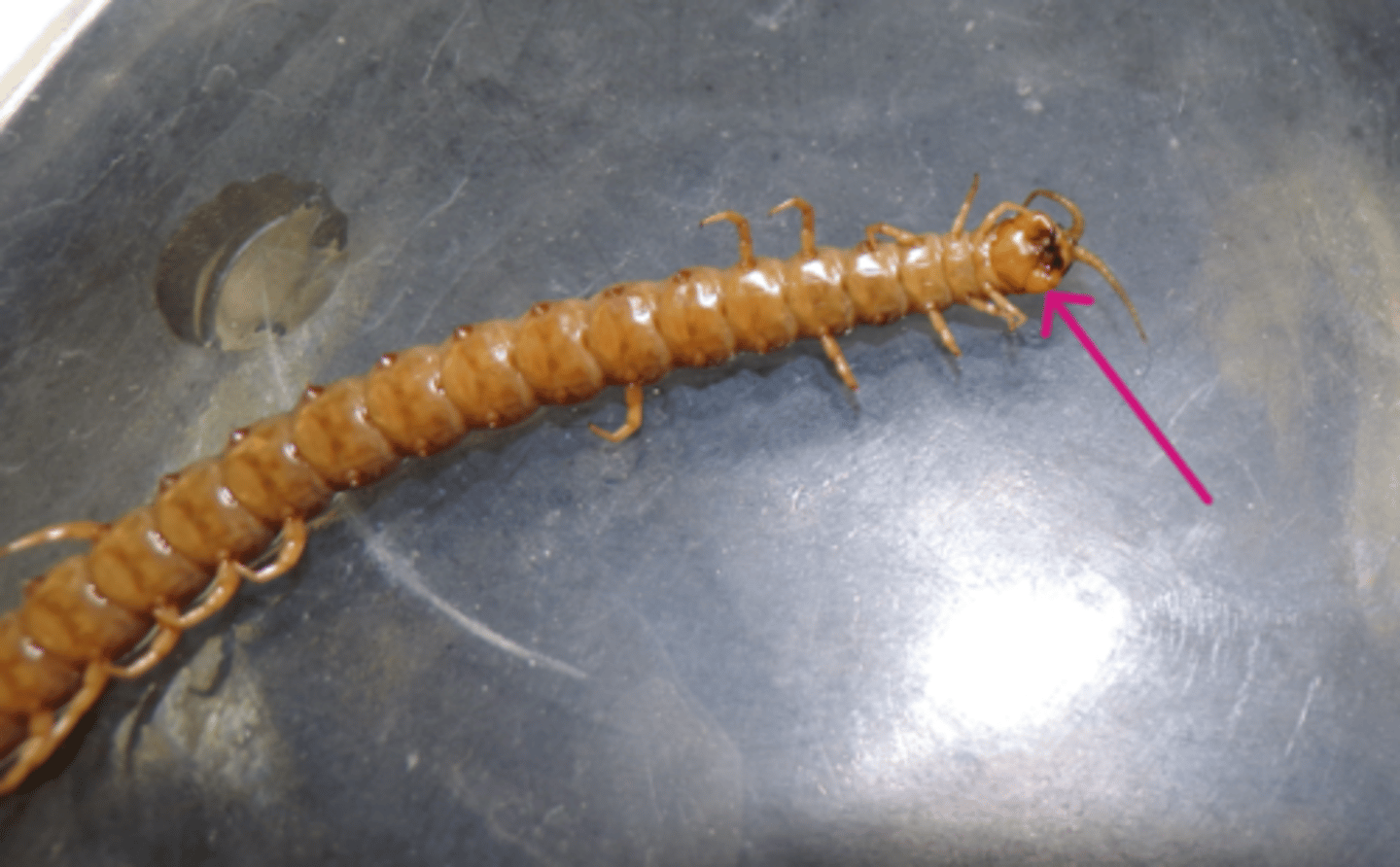
Phylum Arthropoda
Subphylum Myriapoda
Class Diplopoda
Millipede
A: thoracic segment
B: diplosegment
2 pairs
What is the Phylum, Subphylum, Class, and common name of this animal?
What is A and B pointing to?
How many pairs of legs are there per segment?
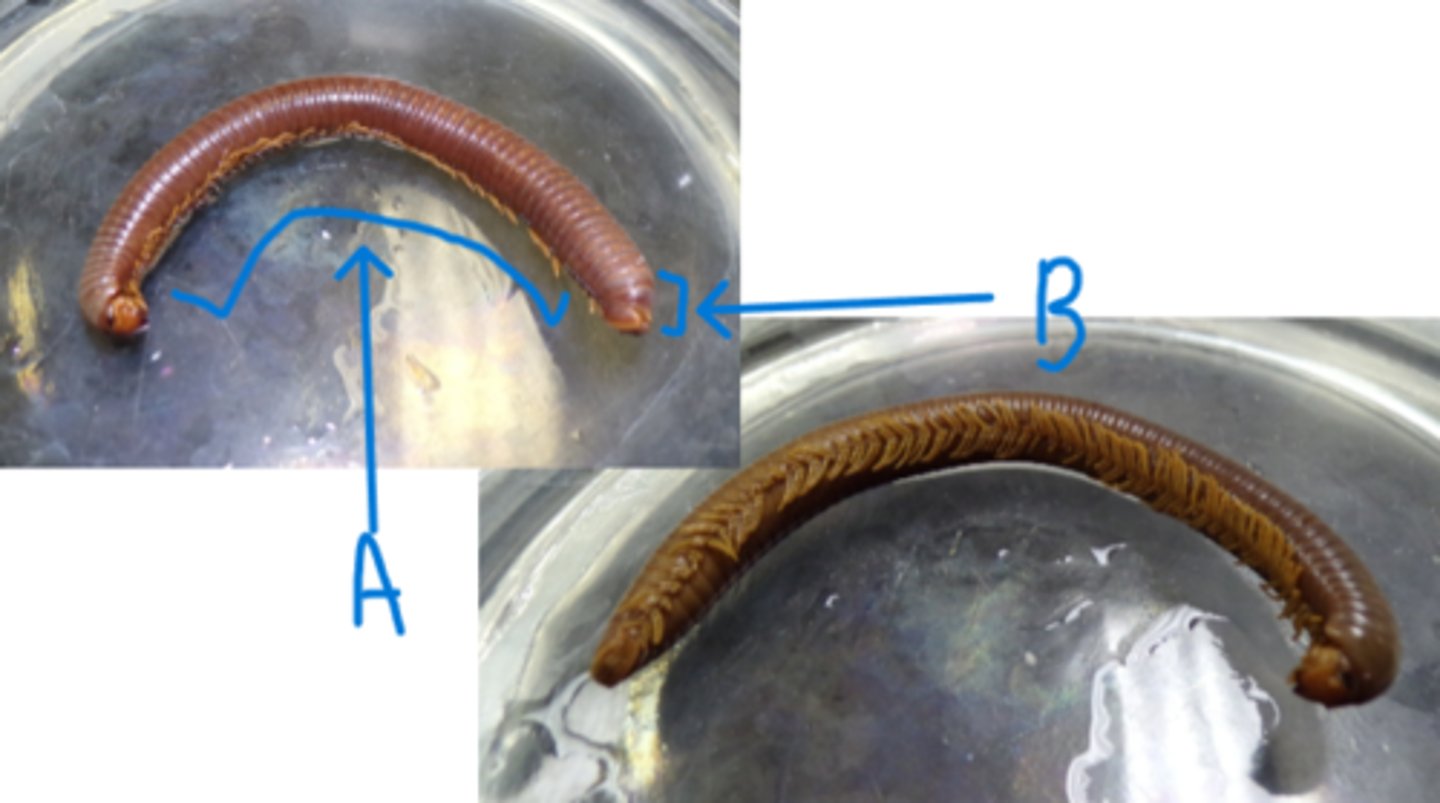
Phylum Arthropoda
Subphylum Hexapoda
Class Insecta
Grasshopper
A: head
B: thorax-- prothorax, mesothorax, metathorax
C: Abdomen
D: forewings
E: hindwings
What is the Phylum, Subphylum, Class, and common name of this animal?
What is A, B, C, D, and E pointing to? List the thorax subsegments in order from top to bottom.
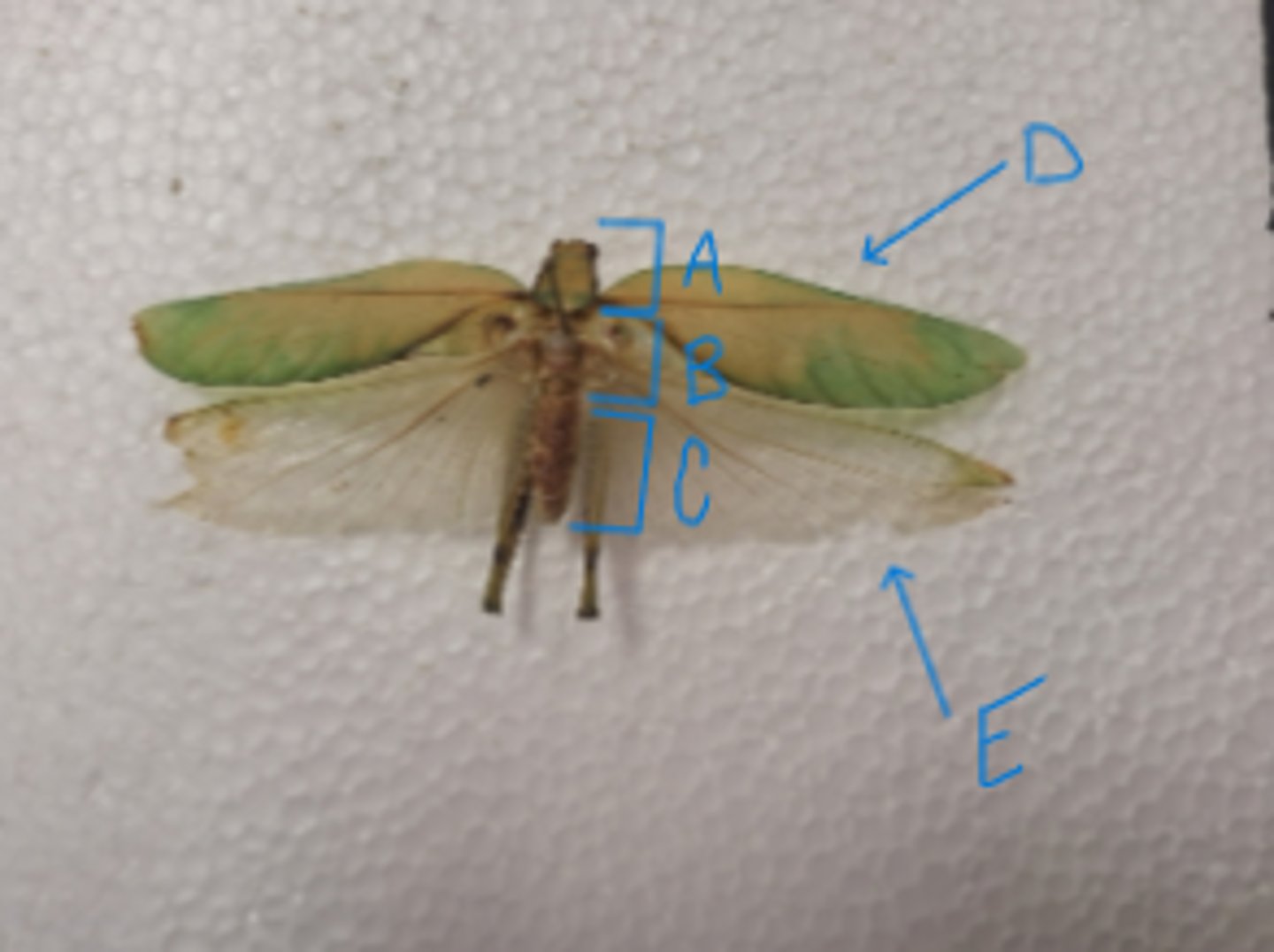
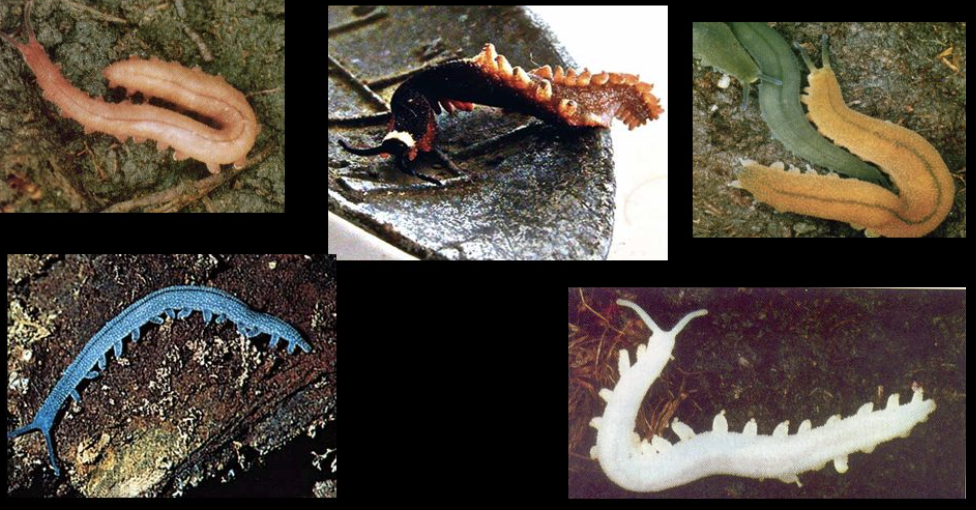
Identifying characteristics of Phylum Onychophora (Under Superphylum Ecdysozoa)
-Soft flexible cuticle with chitin
-Growth by molting (no exuvia/exoskeleton)
-Unsegmented body
-Paired unjointed appendages with claws
-1 pair antennae
-1 pair mandibles and 1 pair oral papillae
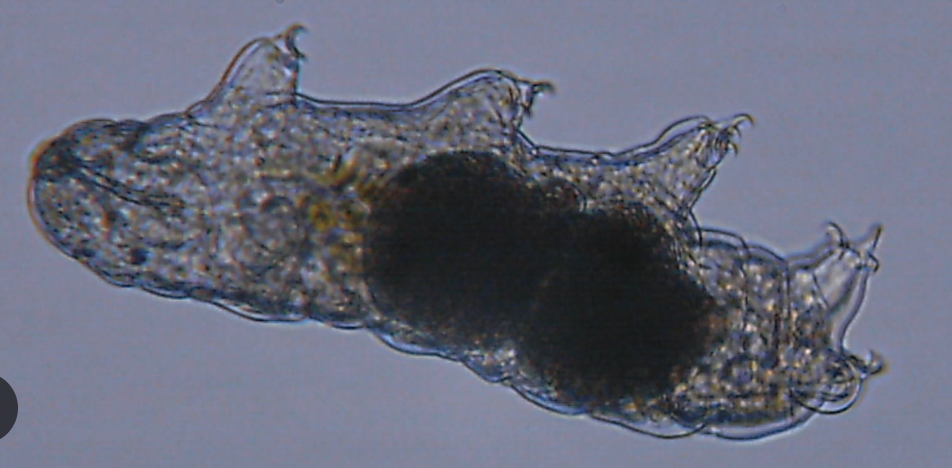
Identifying characteristics of Phylum Tardigrada (Under Superphylum Ecdysozoa)
-Thin flexible nonchitinous cuticle
-Growth by molting
-Unsegmented body
-4 pairs unjointed appendages each with 4-8 claws
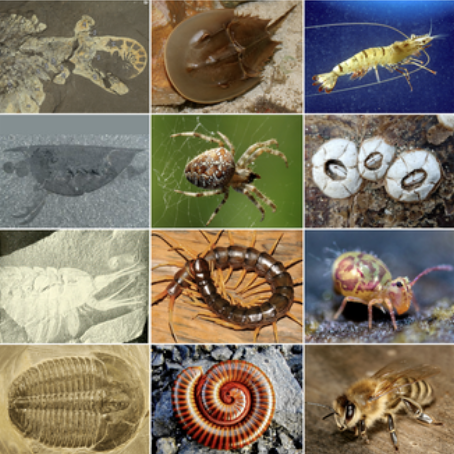
Identifying characteristics of Phylum Arthropoda (Under Superphylum Ecdysozoa)
-Hardened chitinous exoskeleton
-Paired jointed appendages
-Anterior appendages modified into feeding structures
-Segmented body
-Reduced coelom is a hemocoel with dorsal heart
-Complete digestive tract
-Well developed nervous system with paired ventral ganglia and well developed sense organs- muscles in bundles rather than layers

Characteristics of Class Trilobita (EXTINCT) (under Phylum Arthropoda)
-Body plan: head, thorax, pygidium
-Compound eyes
-Antennae
-Mandibles for feeding
-Branched (biramous) appendanges
-Respiration by gills
-Able to roll up like pill bugs
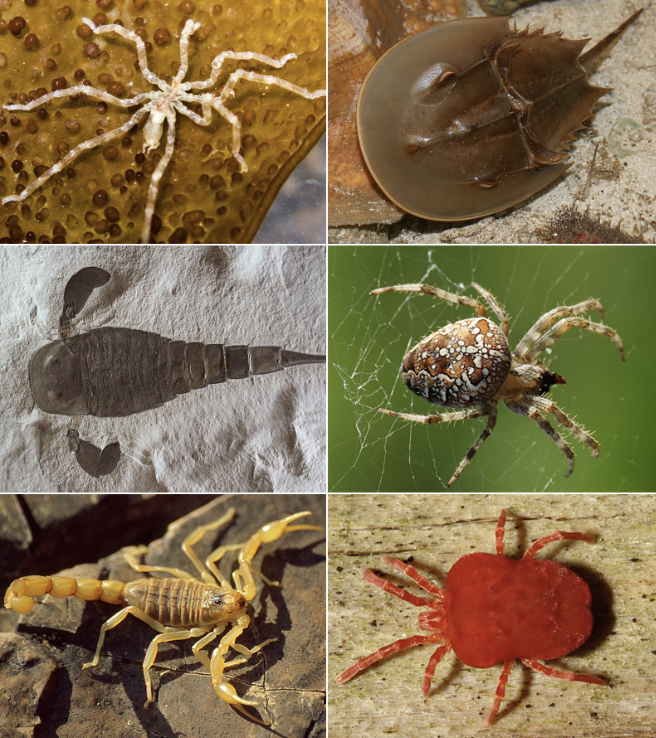
Subphylum Chelicerata (Under Phylum Arthropoda) (spiders, horseshoe crab, scorpions, mites, ticks)
-Body plan: cephalothorax, abdomen
-Most lack compound eyes
-No antennae
-Chelicerae for feeding (no mandibles)
-Four pairs of unbranched legs
-Respiration by gills, book gills, book lungs, or tracheae
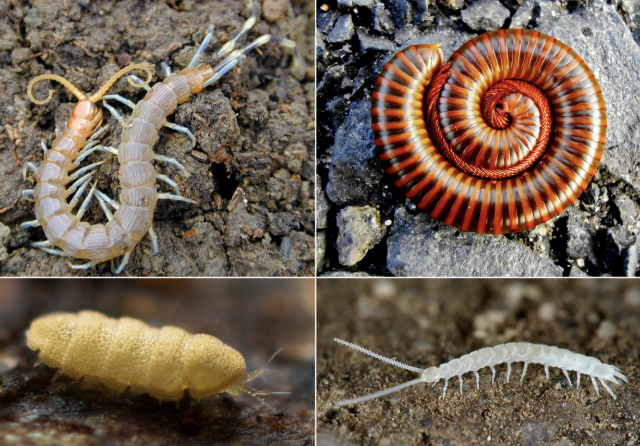
Subphylum Myriopoda (Under Phylum Arthropoda) (centipedes, millipedes)
-Body plan: head, long trunk
-Lack compound eyes
-Single pair of antennae
-Mandibles for feeding
-Unbranched legs on most segments
-Respiration by tracheae
Subphylum Hexapoda (Under Phylum Arthropoda) (insects)
-Body plan: head, thorax, abdomen
-Compound eyes
-Single pair of antennae
-Mandibles for feeding
-Three pairs of unbranched legs
-Two pairs of wings
-Respiration by tracheae
-Includes only invertebrates that can fly
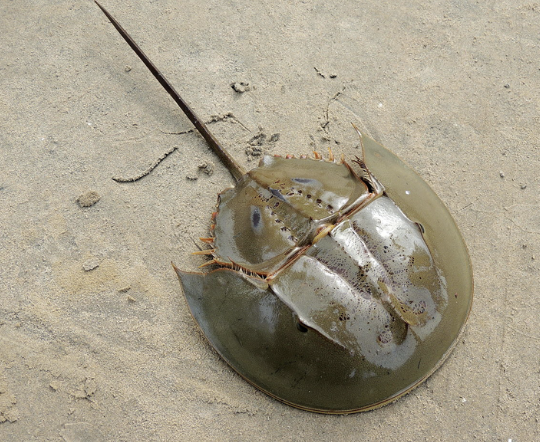
Class Merostomata (Under Subphylum Chelicerata)
-Book gills for respiration
-Abdominal flaps for swimming (swimmerets)
-Simple eyes for navigation
-Compound eye for images
-Also known as horseshoe crabs
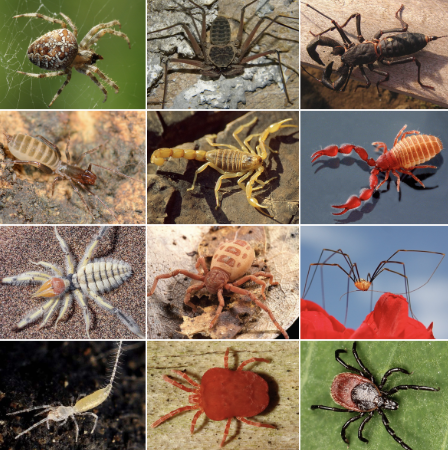
Class Arachnida (Under Subphylum Chelicerata)
-Chelicerae and pedipalps are variously modified
-Typically only ingest liquid food
-Also known as spiders, scorpions, ticks, mites, etc.
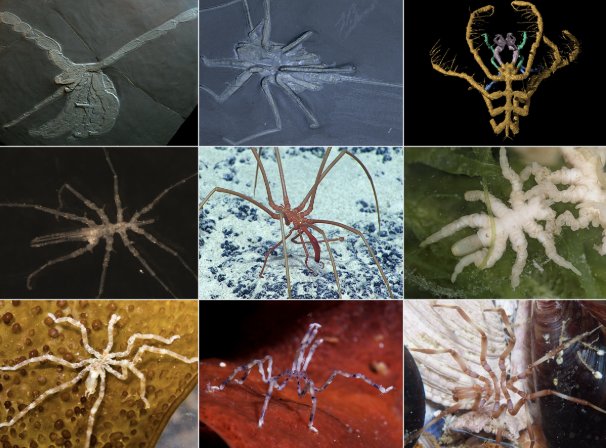
Class Pycogonida (Under Subphylum Chelicerata)
-Very narrow cephalothorax
-Tiny abdomen
-Additional prosomal appendages are ovigers
-Also known as sea spiders
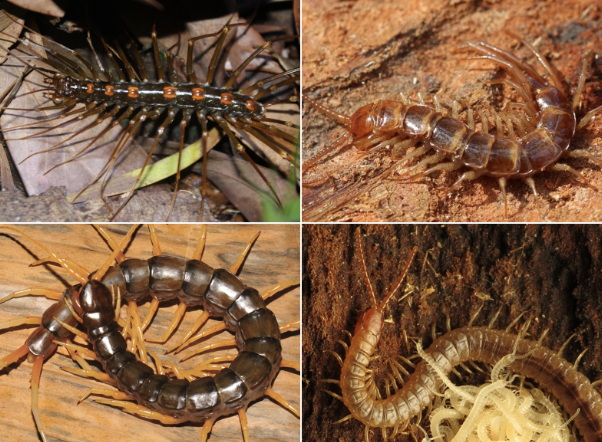
Class Chilopoda (Under Subphylum Myriopoda)
-Head and trunk
-One pair of appendages per segment
-Poison "fangs" are actually claws (on first trunk segment)
-Carnivorous
-Also known as centipedes
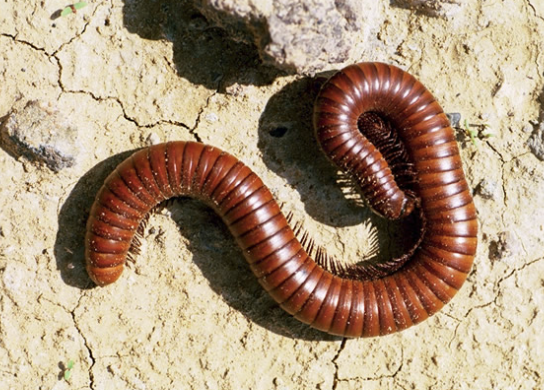
Class Diplopoda (Under Subphylum Myriopoda)
-Head and short thorax
-2 pairs of legs per segment
-Herbivorous
-Also known as millipedes
Class Insecta (Under Subphylum Hexapoda)
-All have 3 pairs of legs on the thorax
-Most have 2 pairs of wings
-Prothorax: 1st pair of legs
-Mesothorax: 2nd pair of legs and 1st pair of wings
-Metathorax: 3rd pair of legs and 2nd pair of wings
-1st pair of wings: forewings
-2nd pair of wings: hindwings
-Also known as insects
American Horseshoe Crab scientific name?
Limulus polyphemus